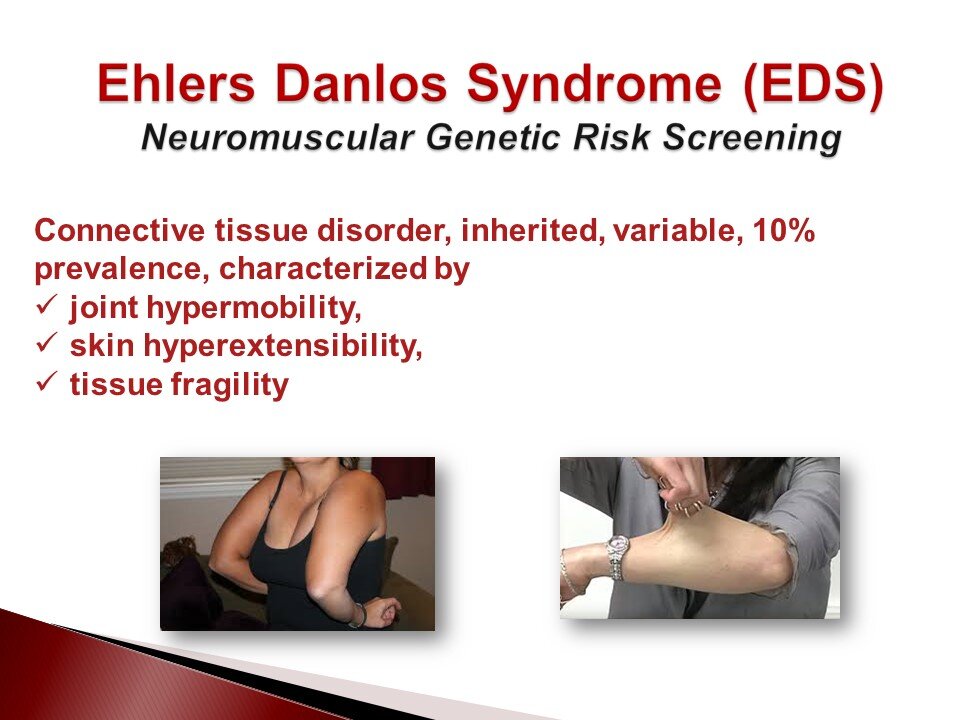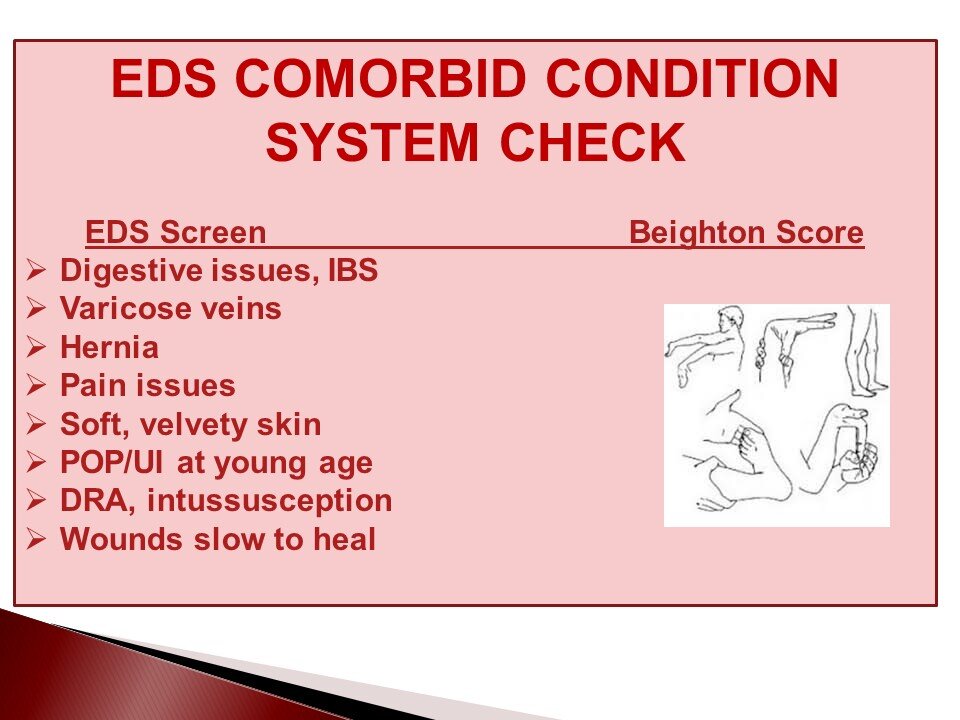POP/EDS Comorbidity
APOPS is appreciative of the Ehlers Danlos Society efforts to recognize the comorbid impact of pelvic organ prolapse and EDS. APOPS proudly announces our status as a member of their Global Affiliation Program, in an effort to increase awareness, improve care, and expand support for women experiencing the pelvic organ prolapse/Ehlers Danlos Syndrome comorbidity.
Stretchy skin can be an indicator of Ehlers Danlos. Stretchy skin on the outside usually means stretchy skin on the inside, so your support tissues can’t hold your organs up properly, increasing the risk of pelvic organ prolapse.
One of the most difficult comorbid condition intersects for women with pelvic organ prolapse is Ehlers Danlos Syndrome (EDS), symptoms of which are joint hypermobility (“double-jointed”), really stretchy skin, or skin that if very fragile (bruises and tears easily). EDS is defined as a more-than-normal range of movement (ROM) in a joint, is either localized (increased range of motion in a single joint) or generalized throughout the body. There are 13 types of EDS, with a variety of symptoms and severity. Joint hypermobility may vary based on age, gender, family and ethnic background. A score of 5/9 or greater defines hypermobility. Here is a link to a self-screening tool for hEDS, the hypermobile type of Ehlers Danlos most women with POP experience.
EDS related stretchy skin may increase the risk of pelvic organ prolapse occurring. It also makes it more difficult to achieve success with treatment for pelvic organ prolapse. Women utilizing non-surgical treatments have a more difficult time achieving success. Women who have surgery have a higher risk of surgical failure.
Many symptoms besides flexible joints indicate EDS may also be one of the causes of your pelvic organ prolapse. If you have these symptoms but have not been diagnosed with Ehlers Danlos, inform your physician about them.
The Beighton score is calculated as follows:
One point if while standing forward bending you can place palms on the ground with legs straight.
One point for each elbow that bends backwards.
One point for each knee that bends backwards.
One point for each thumb that touches the forearm when bent backwards.
One point for each little finger that bends backwards beyond 90 degrees.
Another quick tool to use is the hypermobility questionnaire. An answer of ‘Yes’ to two or more of the questions gives a very high prediction of the presence of hypermobility. Again, like the Beighton score, this does not mean 100% that you have Hypermobility Syndrome, but it indicates it may be a concern.
Can you now (or could you ever) place your hands flat on the floor without bending your knees?
Can you now (or could you ever) bend your thumb to touch your forearm?
As a child did you amuse your friends by contorting your body into strange shapes OR could you do the splits?
As a child or teenager did your shoulder or kneecap dislocate on more than one occasion?
Do you consider yourself double-jointed?
It is important women who are double-jointed attempt to capture insights from a physician familiar with this condition. It is also imperative women who have both EDS and POP inform their urogynecologists or urologists they have the condition. Additional information about EDS can be found at Pelvic organ prolapse and Collagen-associated Disorders or at the Ehlers-Danlos Society website.




